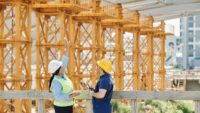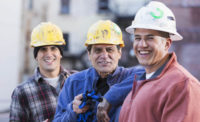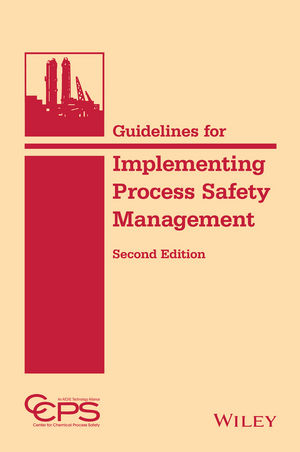Following best practices for chainsaw safety is essential for keeping your team members safe. Using a chainsaw has inherent risks. However, when people know how to operate a chainsaw safely, their productivity will rise, and you’ll reduce the potential for injury. Here are some vital tips for safe chainsaw usage.
1. Schedule time for chainsaw safety training
Some people think if you can turn on a chainsaw, you can use it safely. There’s a lot more employees must know to be safe chainsaw operators. Safety managers may also even discover issues with how someone tries to start a chainsaw.
Drop starting is a common but unsafe method of doing it that involves gripping the piece of equipment in one hand and letting it fall so that gravity helps pull the cord. The safer options are to start the chainsaw either on the ground or between the operator’s legs.
Jason Wilk, a product manager at ECHO Chainsaws, explained that the power source a chainsaw requires does not reduce the need for user education. “Even if it is a battery chainsaw, you still require the same amount of training and protective gear as if you were running a gas chainsaw,” he said.
Wilk also discussed the safety consequences that can occur due to improper training. He said, “Training is often overlooked by employers since most workers can pick up a chainsaw, start it and start cutting some wood. They’re designed to be used in a very specific type of application, and if you’re not exactly trained on how to hold that saw and where to position it into the cut or how to approach the cut, those are all things that can lead to unsafe operating conditions.”
It’s ideal if people receiving the training to operate a chainsaw have time to practice away from their worksites. Then, it’ll be easier for them to ask questions and become more comfortable. However, practicing on a real tree or bush is not always possible. That’s why some companies have employees train with virtual reality chainsaw simulators.
2. Understand how to avoid kickback
Statistics indicate that about 36,000 people in the United States receive treatment for chainsaw-related injuries each year. Some of those incidents involve chainsaw kickback. It happens due to a buildup of pressure in the equipment when the chainsaw cannot sufficiently cut into a material. Kickback causes the chainsaw to jerk backward, and that sudden movement can cause the operator to lose control.
One of the most straightforward ways to prevent kickback is never to use the chainsaw bar’s tip to cut anything. That area is often called the kickback zone. Operators should remain aware of the bar tip’s position while cutting. Don’t let it rest on the ground during the moments when you are not actively slicing through material.
People must also ensure they have firm footing and are standing to the side of the cutting path. When kickback happens, the face and top of the head are the body parts most at risk of injury.
Making sure the chain is sharp enough before starting to use the saw is also essential. If it’s dull, there’s a higher likelihood of the chain being unable to cut through the material, causing kickback.
Finally, people with purchasing authority at companies that regularly require people to use chainsaws should research the latest models on the market. Specifically, many have numerous chainsaw safety features, such as low-kickback chains and safety covers that go over the kickback zone.
3. Don’t operate a chainsaw without the appropriate protective gear
Having the right personal protective equipment (PPE) can make the difference between chainsaw safety and dangerous mishaps. A good starting point is to determine the risks associated with the particular reasons why a person uses a chainsaw.
Experts recognize the variety of potential hazards associated with the activity. They recommend, among other things, that individuals wear vibration-dampening gloves and steel-toed boots while operating chainsaws. Doing those things supports chainsaw safety regardless of whether a user cuts down a Christmas tree or engages in another activity.
A hard hat is also an important piece of gear, particularly since it can protect the wearer from falling branches or other debris. Safety managers should teach employees how to inspect their hard hats for signs of malfunction or excessive wear, then make sure those workers understand the proper procedure for reporting those issues.
Chainsaws can cause hearing damage, especially if people use them for prolonged periods without protecting their ears. Earplugs or muffs are both acceptable. When users operate a chainsaw, they should also know that the type of chainsaw used, and even how they hold the equipment, can impact the overall noise level. Even so, the safest thing to do is wear hearing protection for every chainsaw-related task.
How do chainsaw chaps work?
Bence Carter, an extension agent in Alabama, also recommends wearing cut-resistant chaps for leg protection when working with chainsaws. He discussed the materials used in specialty chaps for chainsaw users, saying, “Chainsaw safety chaps are composed of a rough exterior layer and an interior layer composed of long strands of nylon, polyester, Avertic or Kevlar that extend the length of the chap.”|
Carter continued, “When a moving chain comes into contact with the chaps, it easily cuts the exterior layer while the inner strands pull out and tangle the drive sprocket.” The inner strands cause the chainsaw to jam once they get tangled up in it. The chain rotates around the bar at nearly 90 feet per second, so it only takes milliseconds for the threads to disable the equipment.
However, people should check that their chaps fit securely on their bodies before starting to use chainsaws. Otherwise, this beneficial type of gear may not function as intended.
Chainsaw safety requires a thorough approach
Staying safe while using a chainsaw requires having forethought at every stage of the process. Before someone attempts to operate a chainsaw, they should verify that the chain is sharp enough to sufficiently cut through the desired material.
They must also understand how to choose the right saw for the job and take the time to read the user’s manual associated with a particular model. Then, after using the chainsaw, they should check for pieces of debris stuck in any component, including the air intake vent.
Safety managers and similar professionals can encourage and support people in upholding safe chainsaw practices. Then, the likelihood of accidents and injuries decreases.







